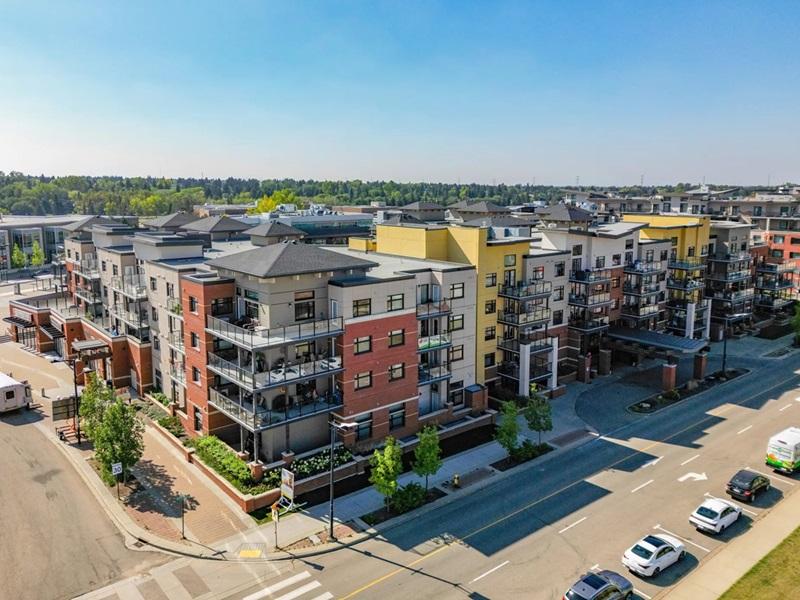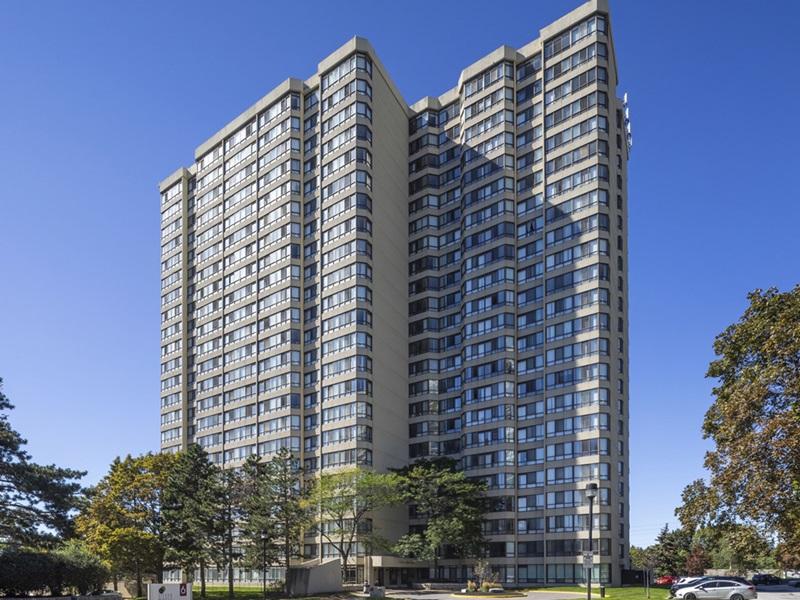
Apartment panelists at the Real Estate Forum 2019 in Toronto, from left: John Ballantyne of RioCan, Philip Fraser of Killam, Paula Gasparro of CMLS Capital, Alf Hendry of Homestead and Mark Kenney of CAPREIT, with moderator Aik Aliferis of M&M. (Steve McLean RENX)
“The apartment market continues to be very buoyant, with strong returns, solid demand and record low vacancy rates”: That is how Marcus & Millichap’s Aik Aliferis introduced a panel on the asset class at the Toronto Real Estate Forum at the Metro Toronto Convention Centre on Dec. 5.
Aliferis, M&M’s senior managing director of investments, opened the session with an overview of the Canadian multifamily rental sector, which is comprised of about two million units.
He said capitalization rates continue to go down, suite prices are going up, new construction is now viable and the 2019 transaction volume will exceed the 2018 numbers.
Despite all of this positive news, however, there remains a growing problem.
This is Part I of a two-part report. Tomorrow: The panelists discuss strategy, update current and recently completed projects.
Even with elevated levels of construction, the supply of new apartments isn’t meeting the demand created by employment and average income growth, increased immigration, and Canada being seen as a safe haven and a good place to live.
Policy, slow approvals impact supply
CMLS Capital vice-president of real estate finance Paula Gasparro said the federal government’s national housing strategy — which aims to remove 530,000 families from housing need and cut chronic homelessness by 50 per cent — is a great program with plenty of initiatives.
However, without the federal, provincial and municipal levels of government working together, the industry isn’t going to be able to supply what’s needed.
Gasparro said municipalities could better contribute to the goal by speeding up entitlements, waiving development charges and taxes for affordable units, and reducing planning costs for developers.
Provinces could take some pressure off rising construction costs by reducing the goods and services taxes on building materials.
“We have all of these housing needs that are getting pumped into the three big cities with absolutely no solution,” said Canadian Apartment Properties REIT (CAPREIT) (CAR-UN-T) president and chief executive officer Mark Kenney.
“Yes, you’ve got new construction, but it’s not enough and it doesn’t work.
“We are headed deeper into a housing crisis in the big three (Toronto, Vancouver and Montreal). In the next six (biggest) cities, it’s really a flow-over effect of much the same.
“They might not have the same crisis with immigration flows, but there’s urbanization and growth happening in a different kind of way in those places as well. You have a regulatory building environment that’s not embracing housing.”
“To get something done in the city of Toronto is painful,” said RioCan REIT (REI-UN-T) senior VP of asset management John Ballantyne. “You’re three to four years into the process just to get your entitlements.”
Continuum-Starlight apartment deal
Continuum REIT’s cancellation of its proposed initial public offering (IPO) last month, and its subsequent agreement to sell 44 Greater Toronto Area (GTA) high-rise apartment buildings with 6,271 units to Starlight Investments for $1.732 billion, will be the biggest multifamily deal in Canada when it closes later this month.
Aliferis asked the panelists if they were surprised by the deal, owing to its immense size.
Kenney said the price per unit was good and the cap rate was in line, and it was just the breadth of the portfolio that limited the field of purchasers.
He noted Starlight is very good at understanding replacement cost and is in a position to get value over time, since it doesn’t need immediate accretion.
“What the portfolio is telling the market is that value-add portfolios are very difficult to find. I would have characterized this portfolio as sub-prime several years ago.
“I would characterize this portfolio today as absolute prime in terms of what the market is looking for.
“The suburbs of the GTA are where we’re seeing the most growth in terms of rent lifts, so this is very much indicative of that.”
Apartments a stable asset class
Homestead Land Holdings Limited CEO Alf Hendry said the deal makes sense because multifamily rental has been such a stable asset class for years. He also discussed the immense investor interest in the Continuum IPO itself.
“It doesn’t surprise me that the IPO was oversubscribed by three times. Sixty per cent of the demand was from Canadian investors and 40 per cent of the demand for the IPO was from U.S. investors.
“The amount of money that’s on the sidelines to invest in the multires industry in Canada, in Ontario and in the GTA is phenomenal.
“When you look at the underlying yield with a cap rate of 3.5 per cent and a price per suite of $270,000, that’s what we saw all year in the marketplace in the Toronto and Hamilton area, so I’m not surprised.
“I’m sure that if Starlight hadn’t bought it, somebody else might have tried.”
“It was the perfect storm,” said Ballantyne. “You don’t see an offering of this size come to the market very often.
“Money is still super cheap right now and the demand for this product is unbelievable. The real estate is dated, but it looks like the value-add opportunity here is just astronomical.”
PART II on Tuesday: The executives discuss strategy and update their current and recently completed projects.







